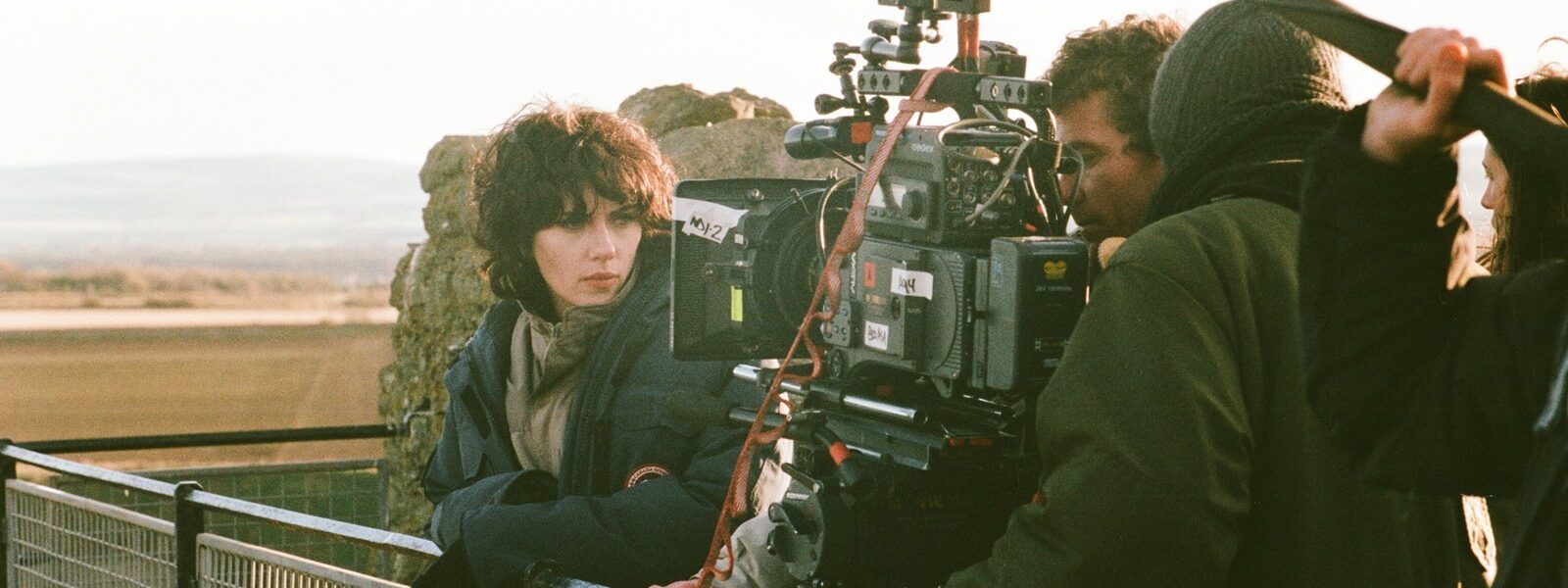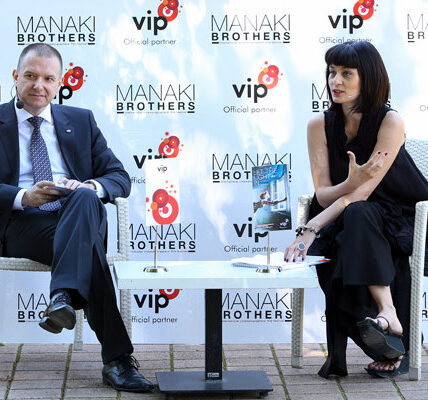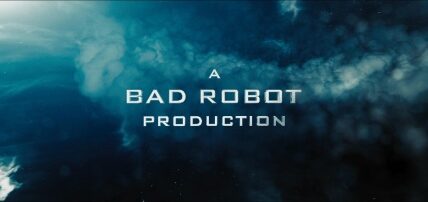Depth Perception – filming scenes for Under The Skin
Producer Trevor Evans and cinematographer Mark Silk shooting in Dartmoor for Lynne Ramsay’s The Swimmer
The Underwater Studios in Essex has played host to numerous shoots for commercials, television and films. Tom Seymour was invited to watch the filming of scenes for Jonathan Glazer’s Under the Skin, and discovered a whole new side to the British film industry…
The scene is outer space. The character is a murderous alien played by Scarlett Johansson. The setting is an industrial park in outer Basildon. movieScope has been invited to attend the shooting of Under the Skin, a British sci-fi film slated for release in 2014, at the Underwater Studios, Essex.
The love child of producer Trevor Evans, gaffer Bernie Prentice and cinematographer Mark Silk, Underwater Studios is one of the go-to places for underwater filming and special effects for anyone in the British film industry. Indeed, after Under the Skin, Danny Boyle is scheduled to drop in to direct his new film, Trance. Countless commercials and music videos are made here every year, writhing, weightless bodies effortlessly selling soap, skincare and perfume, set to the throbbing beats of the Chemical Brothers or Kosheen.
Evans greets me at the door before showing me around with a bear-like friendliness. Batting off question after question from a bustling, restless crew, he introduces me to the director of Under the Skin, Jonathan Glazer, whose previous films include Sexy Beast (2000) and Birth (2004). Glazer leans easily in the corner of the stage room, decked from head to toe in North Face and supping tea from a polystyrene cup. We chat shop for a second before Evans leads me down to The Well. I peer in through the portal window to see an inflated latex figure suspended in the water, fiercely lit from all sides with an eerie blue light, surrounded by scuba-divers.
Produced by Film4, the BFI and Creative Scotland, Under the Skin is based on the 2000 novel of the same name by Scottish writer Michel Faber. In what is surely one of the most infallible premises for a British independent movie, Scarlett Johansson plays the alien seductress who lures in hitchhikers before fattening them up and killing them for some haute cuisine on her home planet. Or, in the words of the press notes, Under the Skin is about ‘an alien on Earth, disguised as the perfect aesthetic form of a mesmerising woman, who scours remote highways and the desolate scenery of the Scottish Highlands, looking to use her greatest weapon to snare human prey—her voracious sexuality’.
Scarlett Johansson in ‘Under The Skin’, directed by Jonathan Glazer
To the mild disappointment of this reporter, Scarlett’s voracious sexuality isn’t needed on set today. Instead, they are filming a scene in which a humanoid has his insides sucked out in the vacuum of outer space. And a whole new set of rules apply as soon as a camera goes under water. It can be a painstakingly slow process; a 12-hour shift of underwater filming such as this could result in just four seconds of screen time.
Safety, I’m told again and again, is the thing that matters most to Evans, Silk and Prentice. With 150,000 gallons of water and tons of electrical equipment, it’s easy to understand why they’re so intent on stressing this aspect of their job. At the centre of the action is Silk, who has worked as the chief camera operator on the underwater work of films like Stardust, Layer Cake and Son of Rambow. He can spend more than 10 hours a day filming in the stage tank, trying to perfect the shot, and is clearly as fit as a butcher’s dog. “We make our divers go through full medicals every year,” Evans tells me. “But I don’t worry about Mark. If he didn’t have blood in his veins, it would be seawater.”
His hair still wet from the pool, Silk reflects on what he’s learnt in a 25-year career. “I always wanted to do underwater work, and the first time I managed to do it was on [the James Bond film] For Your Eyes Only. Moving the camera around is a lot easier. The water is like the biggest fluid head, so you can do crane and tracks really easily. You just have to be prepared to adapt, and go with the strong points of a set or location. You’ve got to be able to move with it, and not approach a day of filming with any preconceived ideas. If you feel you’ve got to do this or that shot, you can guarantee that you’ll be under water and another shot will work so much better. There are so many variables. Your set is already built for you.
“There’s no geography under water, so you can get away with a lot of things you wouldn’t be able to do on land,” Silk continues. “It allows for a fluidity of shot, so you can rotate the camera as you’re [filming] an artist. You can take it wherever you like because there aren’t the limits of gravity. I respond to a scene. We work with Olympic-standard synchronised swimmers, and some of the moves they can do are just jaw-dropping. A lot of the time we let them do what they do and work off them, then when I’ve exhausted their input I’ll tend to provide my own input and we choreograph it from there.
“You develop an eye from experience. I don’t think I’ve got a natural eye for what will or won’t work, but I have a trained eye. If the sea is oily calm, you know that some shots looking over the surface are going to look beautiful. You learn how to capture the sea as an icy, silvery mass. You wouldn’t find that shot on a storyboard.”
Leaving Silk to chow down on some hard-earned lunch, it’s time for some reflection. It’s not the screening rooms of Soho, or the premieres of Leicester Square or the vast studios of suburban London. But it’s in inauspicious buildings such as this, with a crew of people dressed like they’re going hiking and living on a diet of Hobnobs and instant coffee, where the beating heart of the British film industry truly exists.
Underwater Studios at www.actionunderwaterstudios.com
Taken from movieScope magazine, Issue 27 (March/April 2012)












